Reviews
Godzilla vs. Mechagodzilla II / Gojira tai Mekagojira
Takao Okawara
Japan, 1993
Credits
Review by Steve Macfarlane
Posted on 20 February 2013
Source DVD
Categories The Compleat Godzilla
“Reptiles or humankind: we all fight to protect our offspring.” While on more than one level a bottomless mindfuck of a movie experience, the 1993 Godzilla vs. Mechagodzilla actually winds itself down to a pretty simple question: how far does society go to protect itself before losing its just sense of balance? The human plot concerns two different sets of characters within the apparatus of the United Nations’ anti-kaiju unit, G-Force: some misfit scientists enraptured by prehistoric history, and a cluster of hardline military cadets. The latter crew is hellbent on eliminating Godzilla once and for all—even if it means constructing their own metal version, complete with a sinister cheshire cat grin and parking-lot sized titanium abs.
The pivotal knot in this infernal tug-of-war is a winningly lump-faced Baby Godzilla, who hatches from an egg G-Force picks up while doing reconnaissance on the remote island the monster calls home. (Their presence also reawakens the bellicose red pteranodon Rodan.) Godzilla himself features as little here as in any of the earlier movies—but his first appearance, arriving after 40 minutes of characters anxiously discussing how to deal with him in the abstract, is one for the books. About to depart the island, the scientists run afoul of the monster on a jagged rockface; Godzilla stares them down and howls so ferociously the humans - rendered ant-sized in a beautifully matted frame - run down the other side of the hill.
Back in Kyoto, two women try to accommodate the baby as best possible—including Miki Saegusa, the young psychic whose bizarre direct line to Godzilla’s brain has made her a hugely valuable asset to G-Force. (Hugely popular in the 90s, Miki is the only human character to feature in more than two Godzilla plotlines.) As she gets to know the craggly tyke, Rodan senses the egg’s absence and zooms towards the city with the lateral straightness of a heat-seeking missile. So Godzilla, Rodan and the baby are all part of the same mutant dinosaur family; this teaches the generals that they can lure Godzilla into an ambush with Mechagodzilla, and properly eradicate the monster’s threat once and for all. But the experience of taking care of the stray child - and, worse, the resultant shocks on Godzilla’s psyche - convince Miki for the first time that although her parents were killed in an earlier Godzilla attack, perhaps the monster is not her enemy.
Simultaneously a guy in a suit and a primal force cursed to suffer indelicate human tampering, Godzilla’s two sides are beautifully suffused in the guise of a pissed-off parent. Less the ritual rumble than a high-stakes struggle for the franchise’s heart, the titular versus encounter only happens once: a colossal stadium is flattened, Rodan knocks a skyscraper in half, and both flesh and metal Godzillas lock fire breath in a symmetrical feedback loop of collateral destruction. The punishment meted out is breathtaking, as the entire downtown of Sendai is wrapped in pirouetting clusters of concrete and shrapnel. Embedded within Mechagodzilla’s command center, Miki tearfully realizes at zero hour that she doesn’t have what it takes to kill Godzilla once and for all, while the entire G-Force politburo watch a live feed from headquarters.
Top to bottom, director Takao Okawara treats his material with meticulousness and respect: the animatronic and suit work makes the special effects among the series’ best, and the human scenes have a flirty breeziness that’s not always a given. Akira Ifukube’s score - especially the blaring horns assigned to Mechagodzilla - is both seasick and operatic, sketching elemental forces horribly out of whack. In expositional scenes of UN buildings and laboratories, Okawara’s camera regularly tilts up from basic establishing shots towards the skyline, and then holds a beat. The result? Landscapes with everything in place—except of course, Godzilla. These are portentous reminders of how much space the beast must - and will - take up, urging again the question of cohabitation while the story careens ahead into doomsday.
More The Compleat Godzilla
-
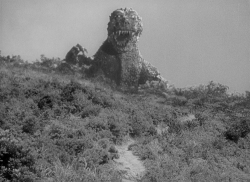
Godzilla
1954 -
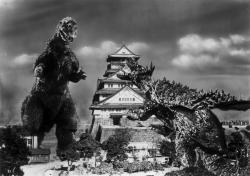
Godzilla Raids Again
1955 -
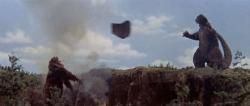
King Kong vs. Godzilla
1962 -
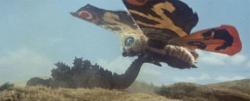
Mothra vs. Godzilla
1964 -
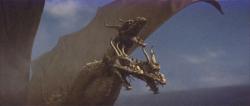
Ghidorah, the Three-Headed Monster
1964 -
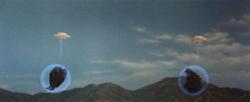
Invasion of Astro-Monster
1965 -

Ebirah, Horror of the Deep
1966 -
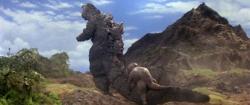
Son of Godzilla
1967 -

Destroy All Monsters!
1968 -
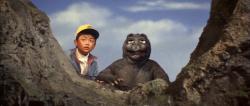
All Monsters Attack
1969 -

Godzilla Vs. Hedorah
1971 -
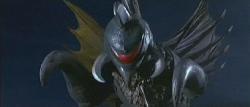
Godzilla vs. Gigan
1972 -
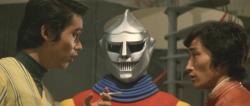
Godzilla vs. Megalon
1973 -
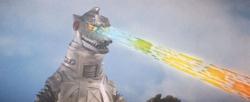
Godzilla vs. Mechagodzilla
1974 -
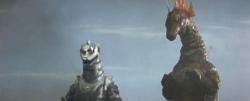
Terror of Mechagodzilla
1975 -
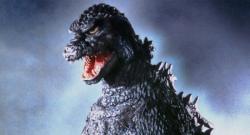
The Return of Godzilla
1984 -

Godzilla vs. Biollante
1989 -
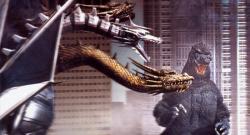
Godzilla vs. King Ghidorah
1991 -
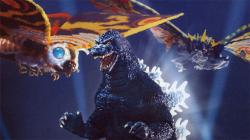
Godzilla vs. Mothra
1992 -
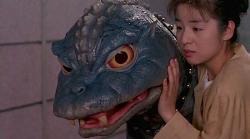
Godzilla vs. Mechagodzilla
1993 -
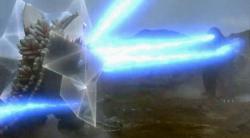
Godzilla vs. SpaceGodzilla
1994 -
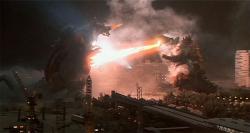
Godzilla vs. Destoroyah
1995 -
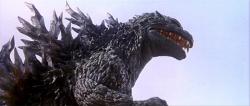
Godzilla 2000
1999 -
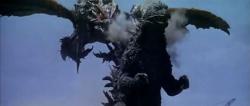
Godzilla vs. Megaguirus
2000 -
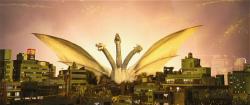
Godzilla, Mothra and King Ghidorah: Giant Monsters All-Out Attack
2001 -
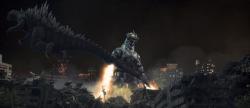
Godzilla Against Mechagodzilla
2002 -
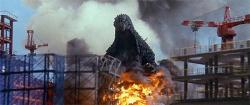
Godzilla: Tokyo S.O.S.
2003 -

Godzilla: Final Wars
2004
We don’t do comments anymore, but you may contact us here or find us on Twitter or Facebook.



